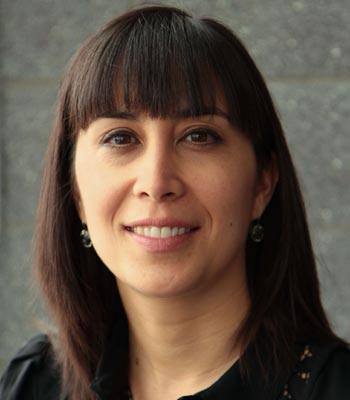
Diversity is one of the strongest characteristics of the team at UHN that’s working on Parkinson’s disease research, says Dr. Lorrain Kalia, a neurologist and scientist at the Krembil Research Institute. (Photo: Dr. Lorraine Kalia)
Dr. James Parkinson's observations about a condition he described as the "shaking palsy" were published nearly 200 years ago, but his work still informs and inspires researchers today as they continue to search for a cure for Parkinson's disease.
The British researcher's 1817 work "An Essay on the Shaking Palsy" helped establish Parkinson's disease as a recognized medical condition and is used to this day by students and researchers studying the neurodegenerative disease that affects more than 100,000 Canadians.
"His description of the core motor abnormalities in Parkinson's disease holds true today and most of us who work in the field are actually astounded at how well he described those features from what were observational studies," says Dr. Lorraine Kalia, neurologist and scientist at UHN's Krembil Research Institute.
Each year in April, Parkinson's patients, their family members and organizations and researchers from around the world, draw attention to the disease as part of Parkinson's Awareness Month.
Parkinson's disease is characterized by slowness of movement, muscular rigidity and stiffness, tremors, and impaired balance. While medications such as levodopa and surgical therapies such as deep brain stimulation can treat some symptoms, a cure remains elusive. Physical therapy, occupational therapy and exercise are additional treatments that can help patients manage their symptoms.
Aging population motivates more research
"We are fortunate at Krembil to have a large centre with a big team of people who are interested in Parkinson's disease research," says Dr. Kalia.
"One of our major strengths is our diversity. We look at Parkinson's disease collectively and from so many different angles. And we are learning more and more every day."
One of the many things researchers know about Parkinson's – and which is a growing cause for concern – is that the number of cases is projected to balloon dramatically over the next several years as baby boomers age and live longer.
"In general, there is a concern that we are going to be seeing an epidemic in cases of neurodegenerative diseases." says Dr. Kalia. "Because these diseases are related to aging, the proportion of people who have Parkinson's disease is going to go up."
Dr. Kalia says the expected wave of new cases has motivated researchers to focus on discovering new treatments that can slow the progression of the disease and keep people healthy and active longer.
"Although medication and deep brain stimulation have been revolutionary and have changed the lives of patients with Parkinson's disease, we need to get to the root of the neurodegeneration with the goal of slowing it down and stopping it altogether."
Facts about Parkinson's disease
Main cause of symptoms
The main cause of the motor abnormalities in the disease is a lack of dopamine, which acts as a messenger between brain cells. The loss of dopamine-producing brain cells results in the deterioration of motor function and other debilitating symptoms.
Additional symptoms of the disease
Motor symptoms are central to the disease, but people with Parkinson's can also be affected by non-motor symptoms such as depression, anxiety, sleep difficulties, cognitive changes and dementia.
Young patients can develop it
Canadian actor Michael J. Fox is among a minority of people with Parkinson's who develop the disease at a young age. Fox was diagnosed with early onset Parkinson's at age 30.
There is no cure
Pharmacological and surgical treatments as well as physical therapy, occupational therapy, speech therapy and exercise can help manage symptoms. However, there is no cure for Parkinson's.
Cutting-edge research
Researchers at the Krembil Neuroscience Centre are dedicated to finding a cure by working to understand why and how brain cells are lost in Parkinson's.
